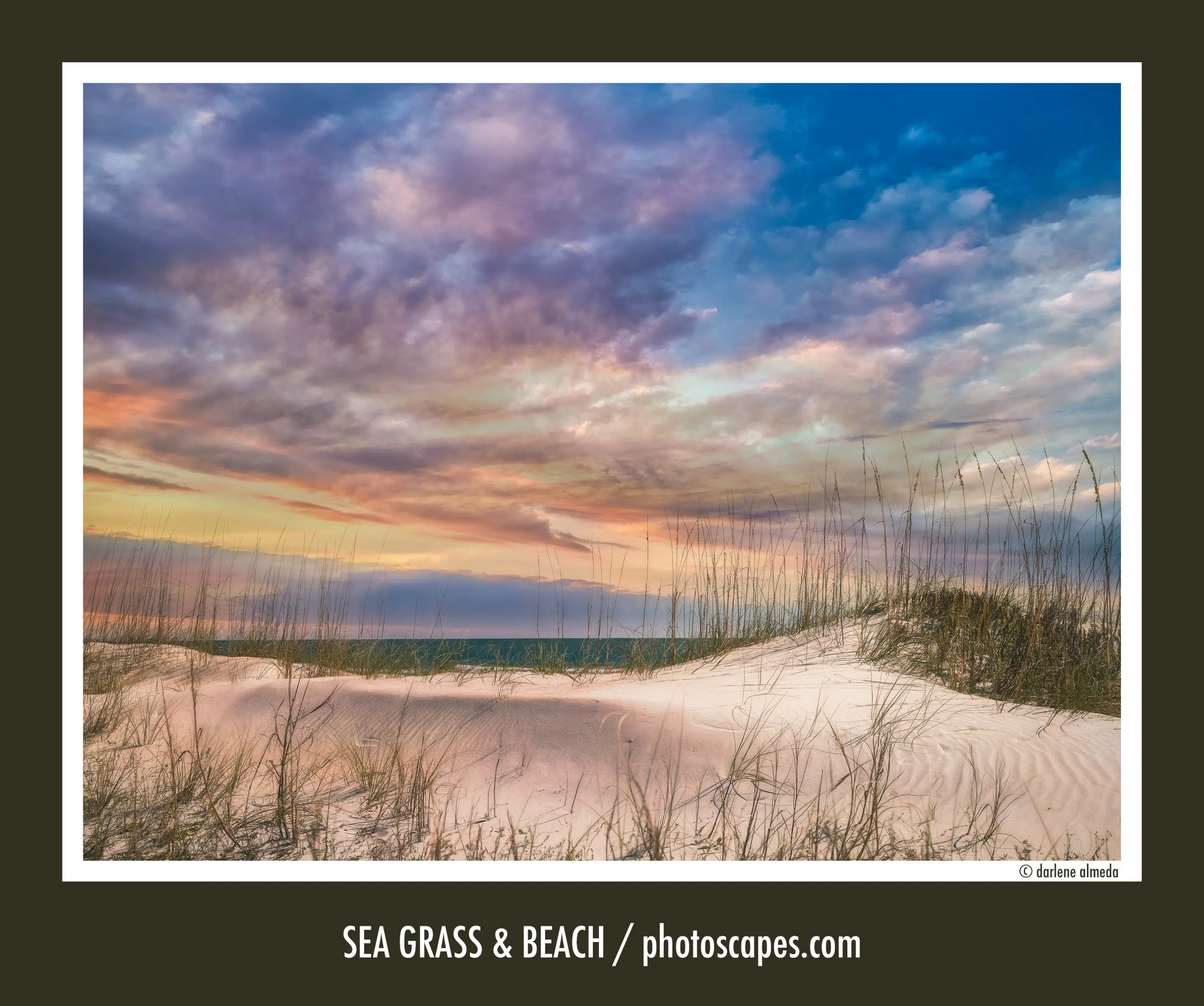
This peaceful little scene was captured on the beach at St. George Island. It was one of those perfect days for photography—sun, sand, and just enough breeze to keep the bugs in check. The sky was putting on a show, the sand was glowing, and my camera had no clue which one to favor. The light was beautiful, but also tricky. The sky and foreground lived in two different exposure zones, and capturing both required a little problem-solving. This post is about how I exposed this image, and how a creative technique from my film days, surprisingly relevant even now, still holds its own alongside modern digital methods. Let’s get started.
Dragging the Shutter
Let’s rewind to one of my old secret weapons from my event photography days. Picture it—weddings and special events—rooms full of people dressed to the nines under lighting that made everyone look like they’d been basted in beige. The trick that set me apart from the pack? A little technique called dragging the shutter. Why did it help? Because my photos looked prettier, and when your clientele is mostly brides, moms, and wealthy folk, that matters. Back in the film days, retouching wasn’t in the budget, and let’s just say I was not about to start painting negatives with a one-hair brush.
Dragging the shutter requires leaf-shutter lenses, one reason I loved the Hasselblad V system. It served me well everywhere: in the studio, on location, in the back of dimly lit theaters with unpredictable lighting, and inside massive church interiors with stained glass windows and soaring 25-foot ceilings. But you might be asking: Why leaf shutters? Because they can trigger a flash at any shutter speed. Compare that to most DSLRs and mirrorless cameras, which are limited to a flash sync speed around 1/80 to 1/125 of a second. Not so with leaf-shutter lenses—they sync top to bottom, start to finish.
Here was my go-to setup (always with the camera on a tripod):
- Meter the background wall using a handheld spot meter.
- Set your shutter speed based on that ambient reading.
- Set your flash to one stop brighter than the aperture you’re shooting at.
Note: The Hasselblad lenses gave me the right depth of field at f/5.6, so I set the flash to f/8. That exposure recipe became my go-to, and it paid the bills.
To break that down:
The lens aperture was set to f/5.6, the shutter speed was based on the ambient light reading from the background, and the flash was set to expose for f/8. This gave me a beautifully lit subject with the flash providing crisp highlights and catchlights, while the background remained warm and softly illuminated thanks to the ambient exposure.
From Banquet Halls to Beach Balls
Guess which one I picked? That’s right—bracketing. Who hauls a flash on a beachside camping trip? Not me. But here’s the thing—I wouldn’t have known to bracket this way if I hadn’t already understood what dragging the shutter can do in a pinch. When done right, it’s essentially a double exposure: one from ambient light, one from flash.
Here’s a recent image where I used the classic dragging the shutter technique. Similarly, capturing a series of bracketed exposures and blending them in post-processing is, in its own way, another form of multiple exposure—double, triple, or more, depending on how you stack them.
So if you’re a digital-age shooter who’s read every photography book you can find, just know: some of the best techniques I still rely on today were born in the film era. And yes, I still invest in Hasselblad gear—for one reason: leaf shutters. Still magical.
Whether you’re shooting with a digital body or rocking a vintage film setup, understanding how light behaves—and how to work with it, not against it—will always be part of the craft. Techniques like dragging the shutter might sound old-school, but they’re rooted in timeless principles that still apply, no matter your gear. So the next time you’re chasing a scene with competing exposures, think back to what photographers have done for decades. And if you’re barefoot in the sand, bracketing for balance, just know: you’re in good company.
P.S. I’ve seen videos floating around that use the term “dragging the shutter”—but with no flash involved. Sorry, folks, that’s just called a slow shutter speed. The real dragging the shutter technique uses flash with a slower shutter to blend ambient light and strobe into a single frame. It’s not the same thing!
P.S.S. Yes, I used flash and strobe interchangeably throughout this article. Don’t panic—both mean “light goes pop.” Whether it’s a speedlight or a studio strobe, if it blinds your subject for half a second and makes you feel powerful, we’re talking about the same thing.
